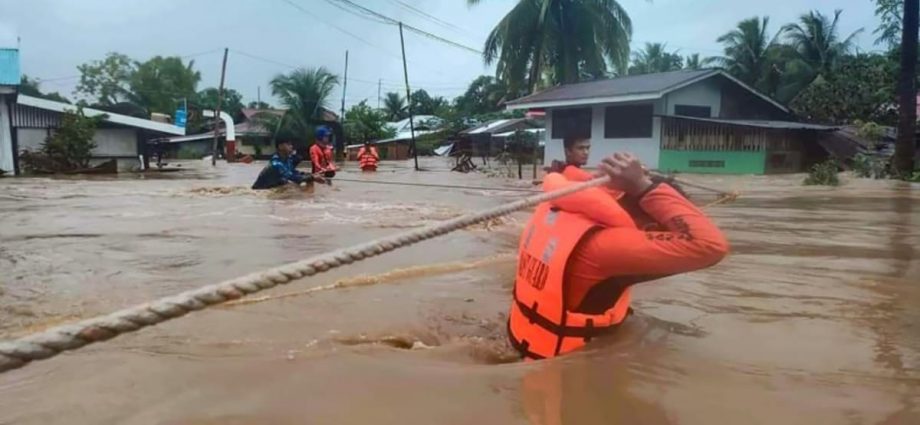
The storm also caused flooding elsewhere in the country.
Photos released by the coastguard showed rescuers using an old refrigerator as an improvised boat to pull children from a flooded community on the central island of Leyte.
The state weather service said the eye of Nalgae passed the small island of Marinduque in mid-morning and could hit Manila, a sprawling metropolis of more than 13 million people, later Saturday.
“Widespread flooding and rain-induced landslides are expected,” while there was “minimal to moderate risk of storm surge” or huge waves hitting coastal areas, it added.
“Based on our projections, this one is really strong, so we really prepared for it,” national civil defence director Rafaelito Alejandro said, adding that 5,000 rescue teams were on standby.
He urged residents in the storm’s path to stay at home before the storm exits into the South China Sea early Sunday.
“If it’s not necessary or important, we should avoid going out today because it is dangerous and could bring you harm,” Alejandro said.
More than 7,000 people were evacuated ahead of the storm’s landfall, the civil defence office said.
The coast guard has also suspended ferry services through most of the archipelago nation due to rough seas, stranding hundreds of vessels and thousands of passengers at ports.
The civil aviation office, meanwhile, said it has shelved more than 100 flights so far.
The storm struck at the beginning of a long weekend in the Philippines, when millions return to their hometowns to visit the graves of their dead relatives.
The Philippines is hit by an average of 20 major storms each year that kill hundreds of people and keep vast regions in perpetual poverty.
Scientists have warned that such storms, which also kill livestock and destroy key infrastructure, are becoming more powerful as the world gets warmer because of climate change.

